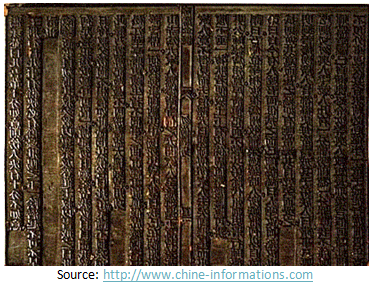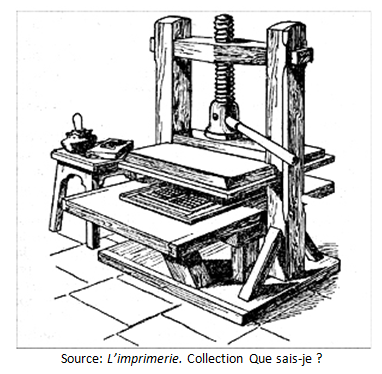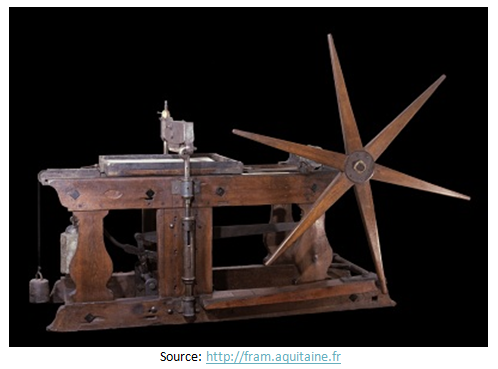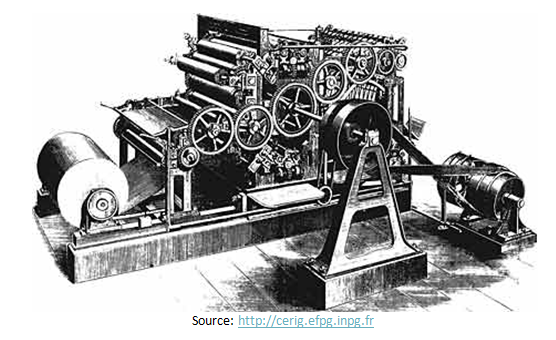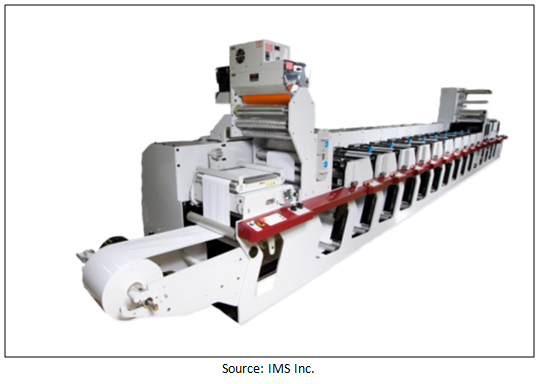Do you know who invented the printing press? Gutenberg? Yes, but…no. Not exactly. Although Gutenberg did perfect printing tools, he should actually be credited with the invention of the typography, or the “modern” printing press characterized by the use of mobile characters which could be used for more than one print. Research has proven the existence of the printing process several centuries before Gutenberg, in China.
According to the law, an invention belongs to the first person who files for a trademark. Throughout humanity, inventions have often been credited to someone who only perfected something created by someone else in a power play attempt. Thomas Edison was an ace at this. I’ll let you do your own research…
What interests me the most about the history of the printing press is not so much the inventors (or “perfectors”) as the presses themselves. So I decided to present, through pictures, five historic moments in the history of the printing press.
1. The xylographer (1st century AC)
Printing using the wood-engraving method involves engraving the text (on the backside!) of a wooden tablet and coating it with ink so to be able to “print” on a sheet of paper.
2. Gutenberg’s press (15th century)
Rather than engraving a whole page on a board as the Chinese did, Gutenberg found a way to manufacture individual characters on more solid material so they could be reused. The only thing left to do afterwards was to make sentences with letters, numbers and punctuation marks, just like a jigsaw puzzle. Patience was a necessity!
3. The lithographic hand press (late 18th-early 19th century)
Operating under the stamping principle, like with the xylography, the lithographic press reproduces texts or images written or drawn on a limestone matrix.
4. The newspaper press (late 19th century)
There are several models of newspaper presses that operate under the same principle. Rather than print one page at a time, this type of press prints nonstop on rolls of paper. The process, still used today in a more evolved form, is used for offset printing, from flexography to gravure.
5. The flexographic press from the Performance P7 series (21st century)
Signed by Mark Andy, this 9 color press was acquired by IMS a few months ago. Recipient of numerous awards in the industry, the P7 was the first of its kind to receive the HD Flexo certification for its excellent printing quality, which is very close to that of digital printing. IMS was the first in Canada to make this acquisition and put it to use for its clients.


